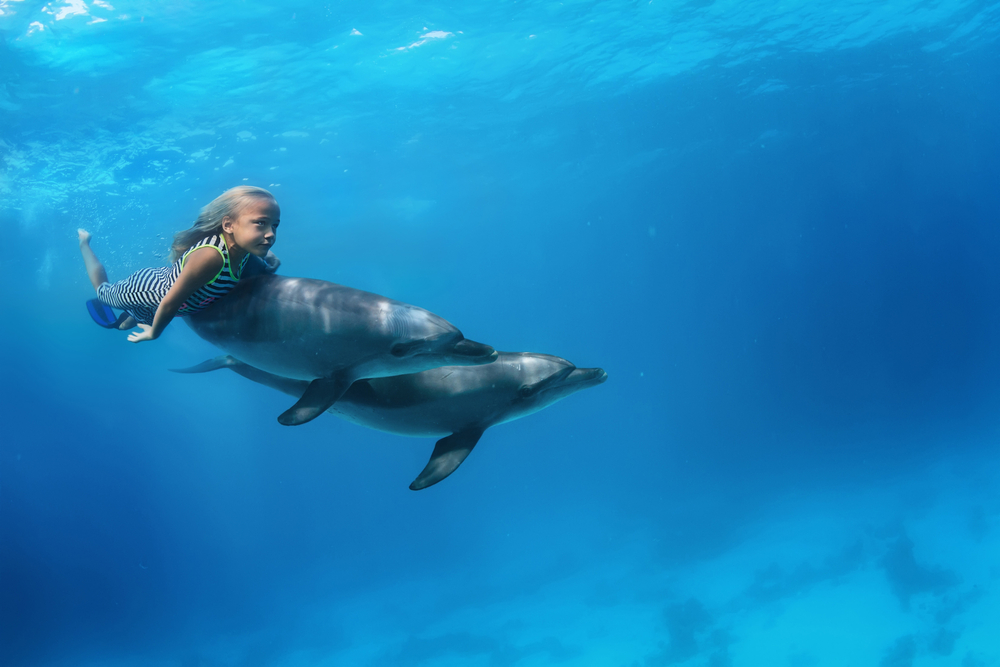Your cart is currently empty!
The Dolphin Children of The Moken Tribe: How These Kids Learned To See Underwater

Imagine a world where children can see underwater with the clarity of a dolphin, navigating the depths of the ocean as effortlessly as they would a playground. For the Moken tribe, this isn’t a fantasy—it’s their reality. Known as the “sea nomads,” the Moken live in close harmony with the waters of the Andaman Sea. Among their many remarkable traits, the children possess an almost supernatural ability to see clearly beneath the waves without the aid of goggles.
This fascinating adaptation defies conventional understanding of human vision and highlights the incredible resilience of the human body. It’s a story that not only reveals the wonders of nature but also challenges what we believe about human limitations. Let’s dive deeper into the world of the Moken tribe and uncover the secrets behind these so-called “dolphin children.”

The Moken Tribe: Life of the Sea Nomads
The Moken tribe, often called “sea nomads,” lead an extraordinary existence intertwined with the ebb and flow of the Andaman Sea. For generations, this semi-nomadic community has depended on the ocean for survival, shaping a unique lifestyle that revolves around its waters. Their homes are often small, hand-crafted boats or stilted dwellings on shorelines, designed to accommodate the rhythm of tides and storms. This intimate relationship with the sea has not only provided them with food and resources but has also fostered a deep cultural connection to the water. The Moken people’s identity is rooted in their ability to navigate, hunt, and thrive in an environment that most would find challenging.
This bond with the ocean is particularly evident in the younger members of the tribe. For Moken children, the water is much more than a place for sustenance—it’s an extension of their world, a realm for play, learning, and growth. They spend countless hours diving, swimming, and exploring, developing an instinctive understanding of their aquatic environment. These children navigate underwater as effortlessly as they would on land, a skill born from constant immersion and an unbroken connection to their natural surroundings.
Living in such harmony with their environment has led to incredible adaptations. The Moken children, for example, possess a physical ability that sets them apart: the power to see clearly underwater without goggles. This extraordinary skill is not simply a biological quirk; it is a testament to how their way of life has allowed them to unlock latent human potential. Their story highlights the profound ways in which human beings can adapt to meet the demands of their environment, offering a glimpse into the resilience of the human spirit.
Underwater Vision: The Science Behind the Dolphin Children
One of the most fascinating traits of the Moken children is their remarkable ability to see underwater. For most of us, opening our eyes beneath the surface results in blurry, distorted vision due to the way light bends in water. However, Moken children seem to defy these limitations, seeing with a level of clarity that rivals that of marine animals like dolphins. Their ability stems from unique adaptations in their eyes, including significant changes in how their irises contract and how the shape of their lenses adjusts underwater—a process known as accommodation.
These adaptations allow the children to focus on underwater objects with precision, an ability that requires their eyes to work harder than they would in air. Normally, the human eye struggles to handle the refractive differences between water and air, but the Moken children’s eyes have trained themselves to overcome this challenge. Their vision underwater is so sharp that they can spot minute details, such as patterns or fish, with ease. This ability isn’t an accident; it’s the result of years of exposure to their underwater environment and the necessity to adapt for survival.
What makes their vision even more astonishing is that it does not seem to cause discomfort. Many of us experience redness or irritation when exposed to saltwater for extended periods, but Moken children show no signs of such distress. This suggests that their eyes have developed a secondary adaptation to the salty, stinging waters of the Andaman Sea. Their story demonstrates how the human body, when pushed by necessity and environment, can evolve in unexpected and extraordinary ways, blurring the lines between human and animal abilities.

Scientific Exploration: Anna Gislen’s Fascinating Findings
To delve deeper into the mystery of the Moken children’s vision, Swedish scientist Anna Gislen embarked on a groundbreaking study to understand their unique underwater capabilities. Her research aimed not only to uncover the mechanics behind their sharp underwater vision but also to explore whether this ability was exclusive to the Moken tribe or something that could be cultivated by anyone under the right conditions. Gislen’s work involved testing the children’s eyesight using underwater patterns and measuring how well they could discern details at various depths.
Her findings were nothing short of revolutionary. She discovered that the Moken children’s ability to see clearly underwater was not purely genetic but could be developed through training. To test this theory, she worked with a group of non-Moken children unfamiliar with underwater environments. Through a series of training sessions—11 within a month—these children demonstrated dramatic improvements in their underwater vision, almost rivaling the capabilities of the Moken children. However, there was one key difference: the non-Moken children experienced irritation and redness in their eyes due to the saltwater, a discomfort the Moken children had seemingly overcome through lifelong exposure.
Gislen’s study underscores the incredible adaptability of the human body and mind. It suggests that many of our limitations are not fixed but are instead tied to a lack of exposure and training. Her research opens the door to fascinating possibilities: What other abilities might lie dormant within us, waiting to be unlocked through practice and persistence? The Moken children’s vision challenges the notion of human limitations, reminding us of the untapped potential that exists within all of us.
Can We Adapt? The Implications of Gislen’s Research
The implications of Anna Gislen’s research extend far beyond the Moken tribe. Her work suggests that human adaptability is far greater than previously believed. If children with no prior underwater experience could develop the ability to see underwater with training, it raises profound questions about the extent of our untapped capabilities. Adaptation, it seems, is not solely a survival mechanism but a skill that can be nurtured and refined through practice.
The findings also highlight the role of early exposure in shaping extraordinary abilities. The Moken children have grown up immersed in their underwater environment, which has allowed their bodies and brains to adapt in ways that seem almost superhuman. This aligns with broader research on neuroplasticity, the brain’s ability to reorganize itself in response to experience. It suggests that early, consistent exposure to new challenges can fundamentally alter how our bodies and minds function, opening up possibilities for abilities we might never have imagined.
These discoveries could have practical applications in various fields. For instance, divers, marine biologists, or search-and-rescue teams operating underwater could benefit from training programs modeled after Gislen’s research. It also raises intriguing ethical questions: Should we pursue training techniques to unlock these abilities, or would doing so risk losing touch with the natural limitations that make us human? The Moken children’s vision is more than a scientific anomaly—it’s a testament to the incredible adaptability of humans and a window into what might be possible if we push the boundaries of our environment.
Lessons from the Moken: What This Means for Us
The story of the Moken children is as inspiring as it is extraordinary. It serves as a powerful reminder of the incredible adaptability of the human species, challenging preconceived notions of what we can and cannot do. In a world dominated by technology, where convenience often replaces effort, the Moken children demonstrate the value of living in harmony with nature and embracing challenges that push the limits of our abilities.
Their underwater vision is not just a biological marvel; it is a reflection of their lifestyle and the environment they inhabit. It shows how human capabilities can flourish when nurtured by necessity and practice. For the modern world, their story is a call to reconnect with the natural world and to rethink the limits we impose on ourselves. It suggests that many of the skills and abilities we consider unattainable may simply require exposure, effort, and a willingness to adapt.
Ultimately, the Moken children’s unique talents inspire us to question what else we might be capable of if we challenge the status quo. Their story is not just about seeing underwater—it’s about seeing beyond our perceived limitations. It is a testament to the resilience of the human spirit and a reminder that our potential is often far greater than we dare to believe.
